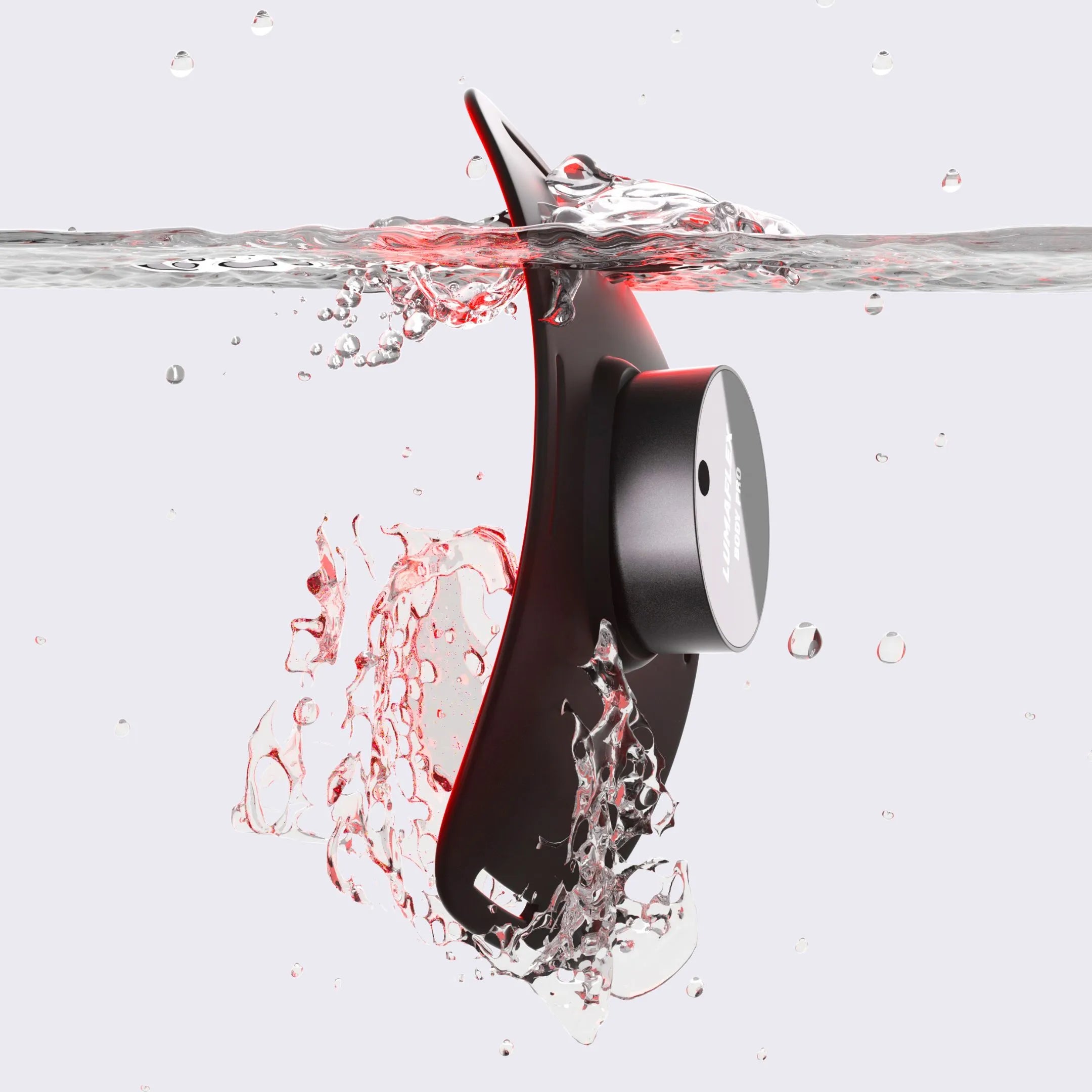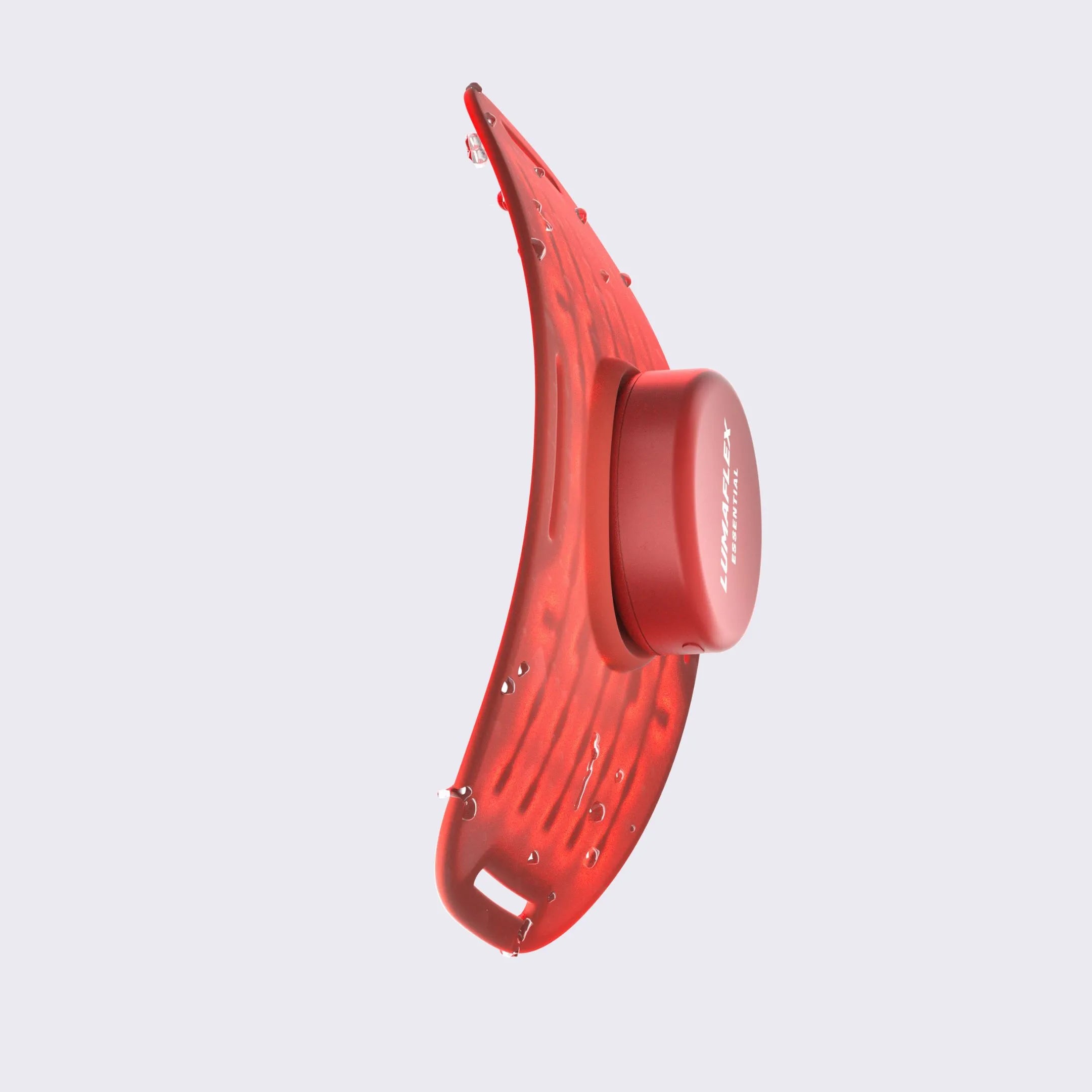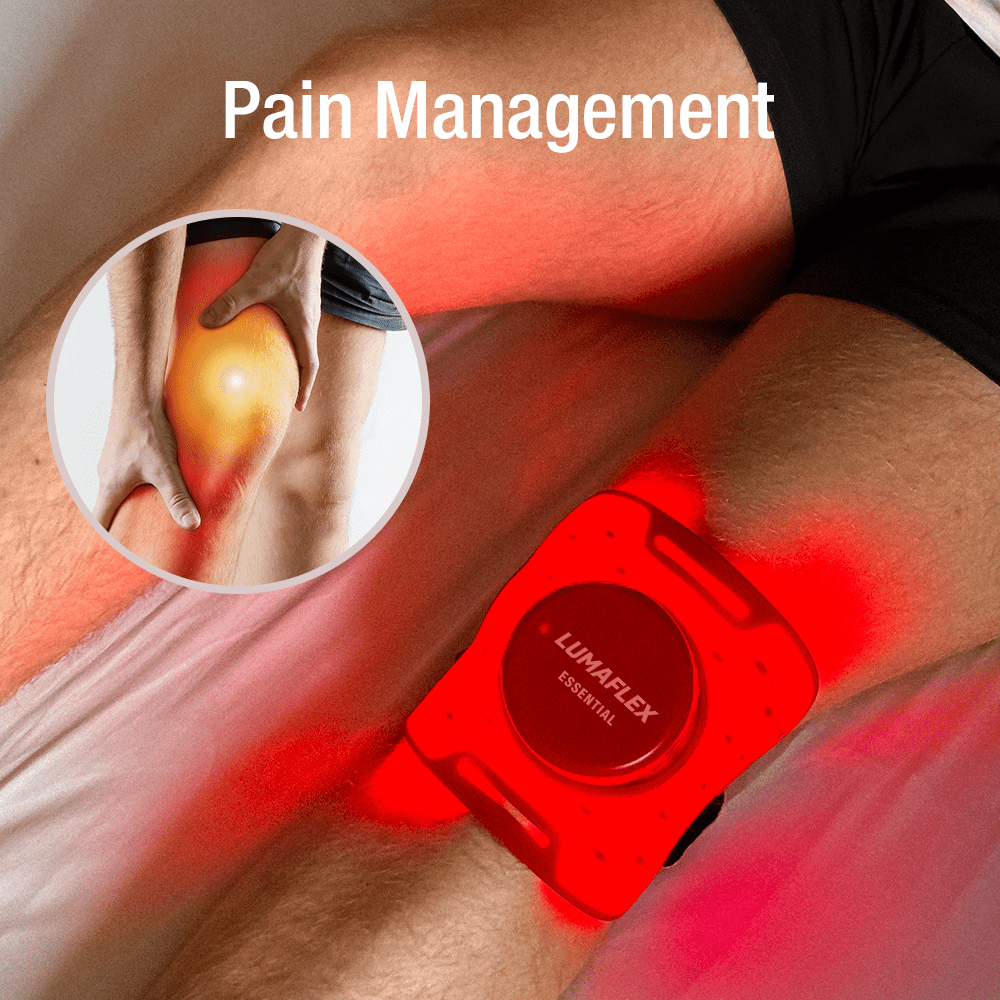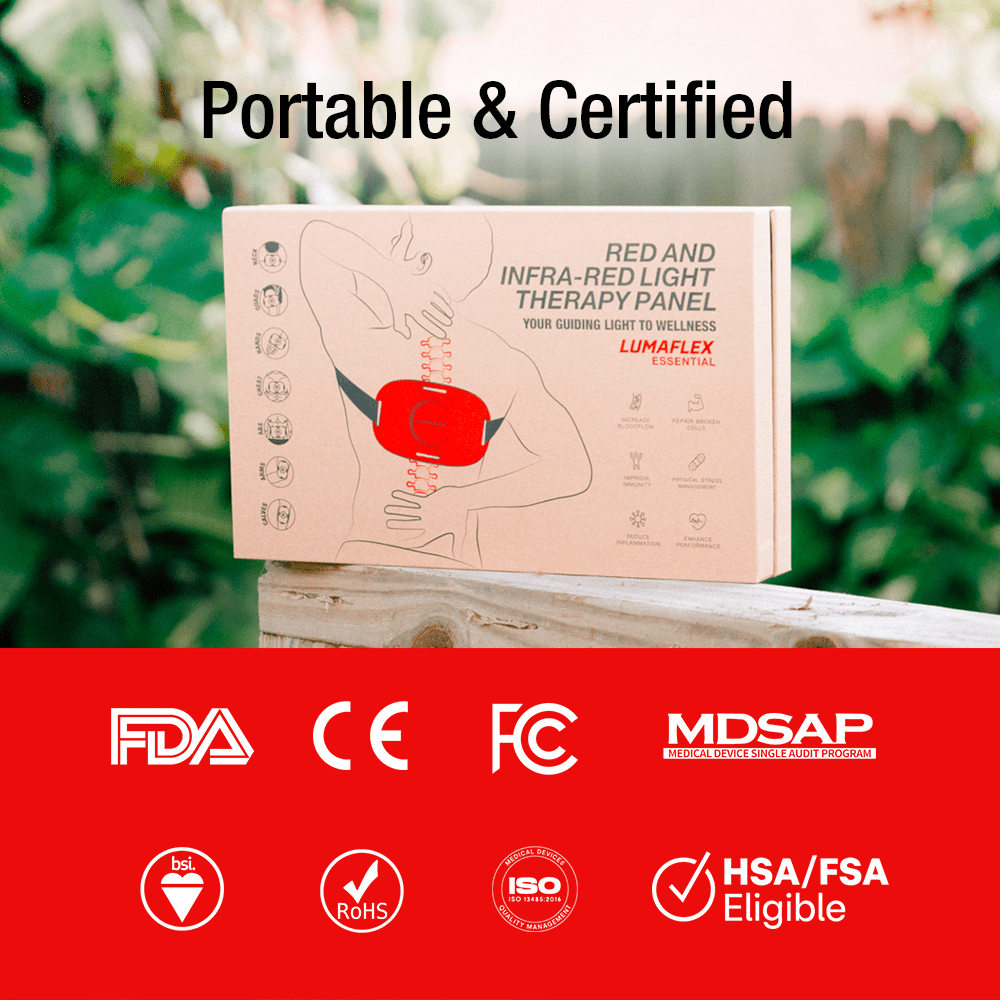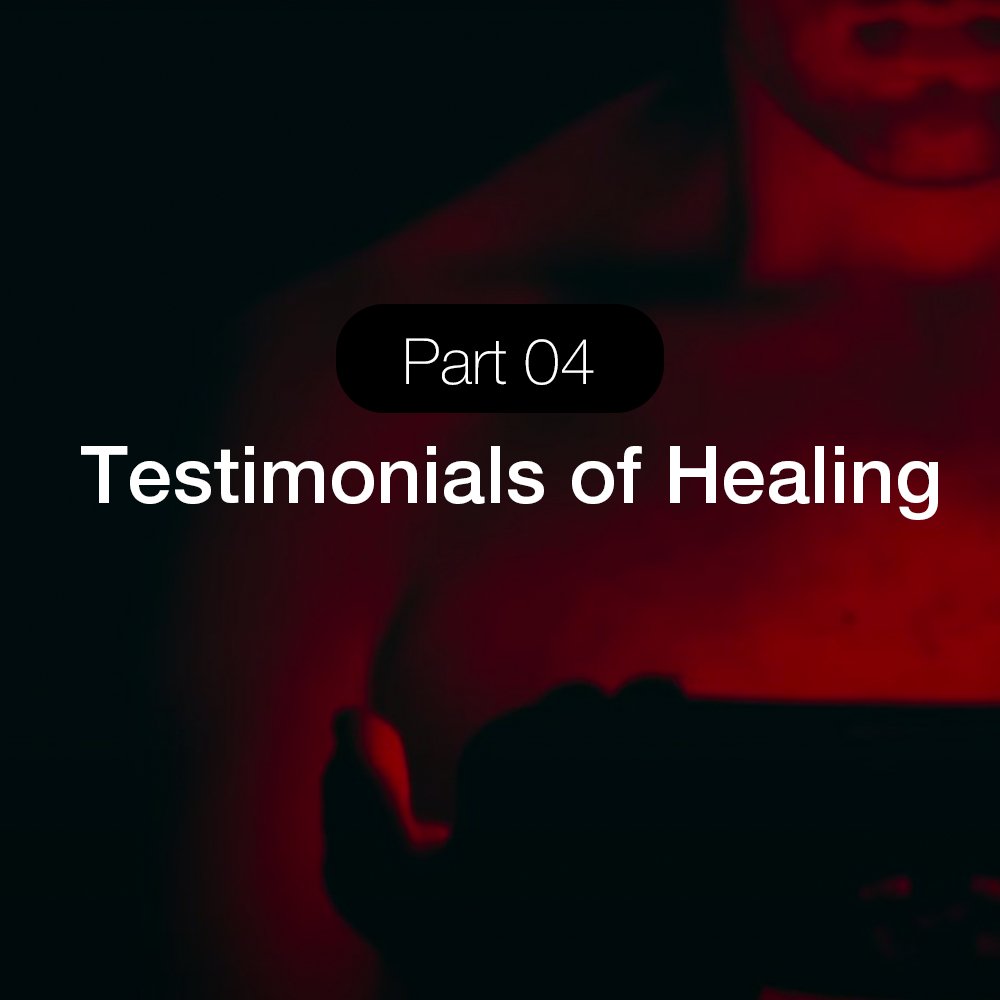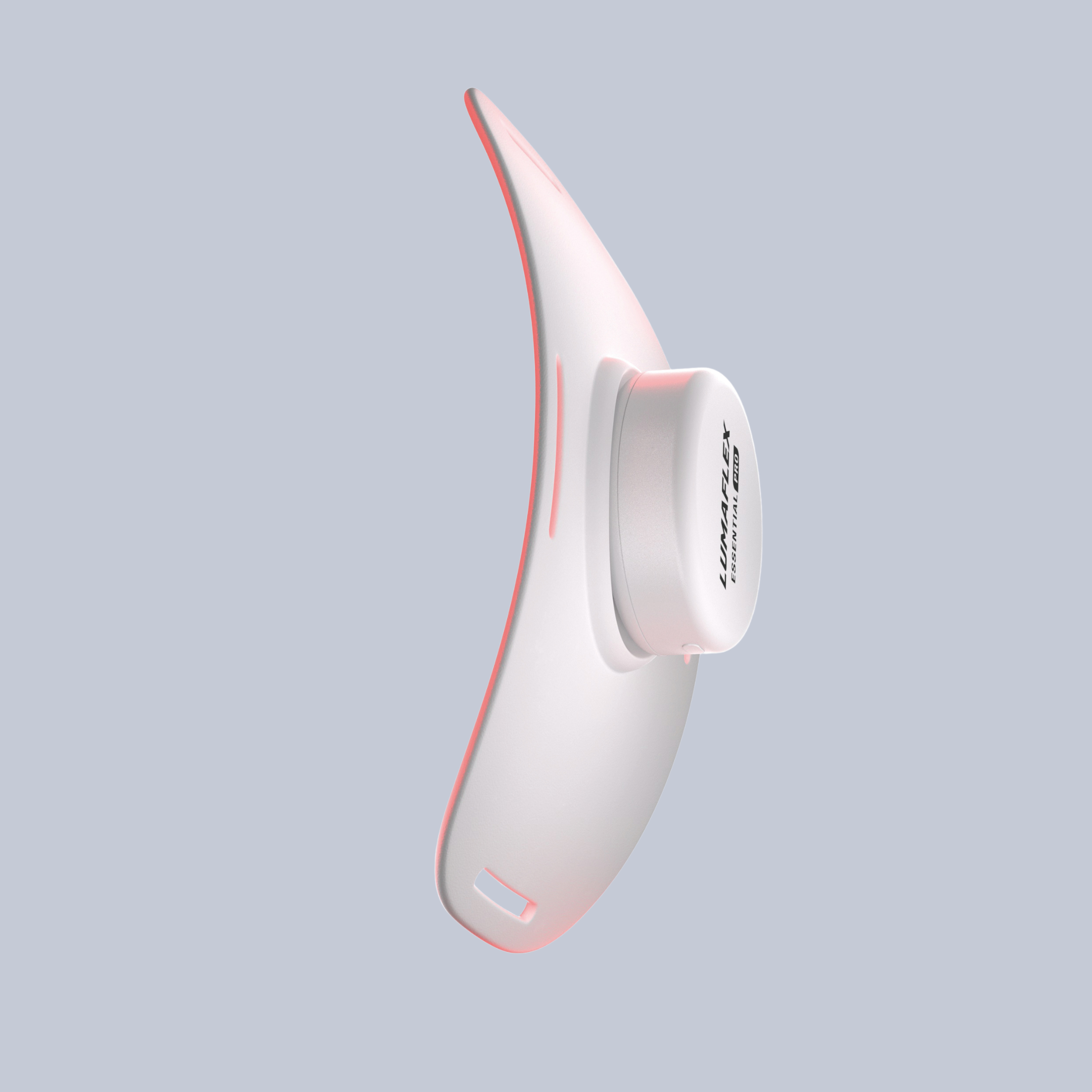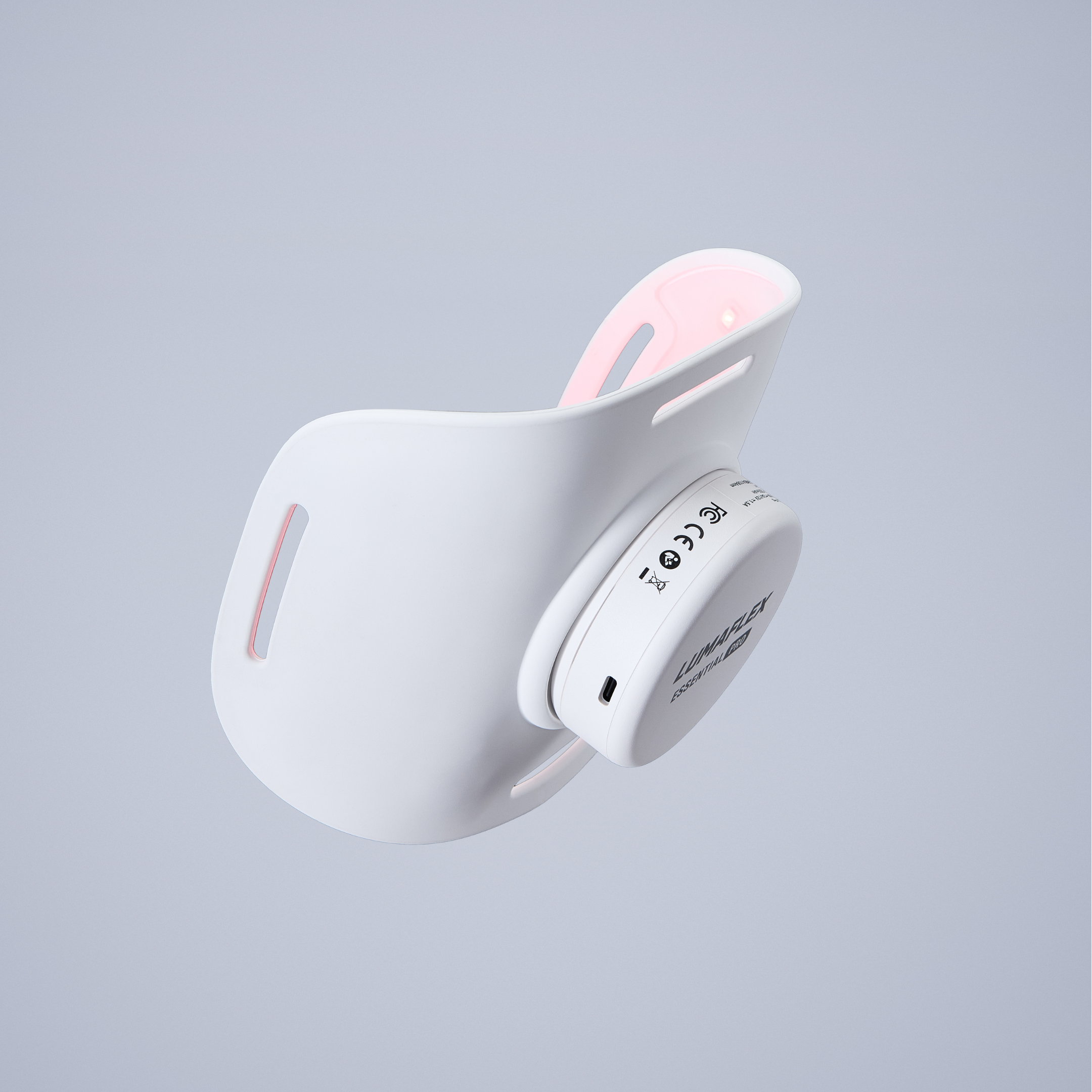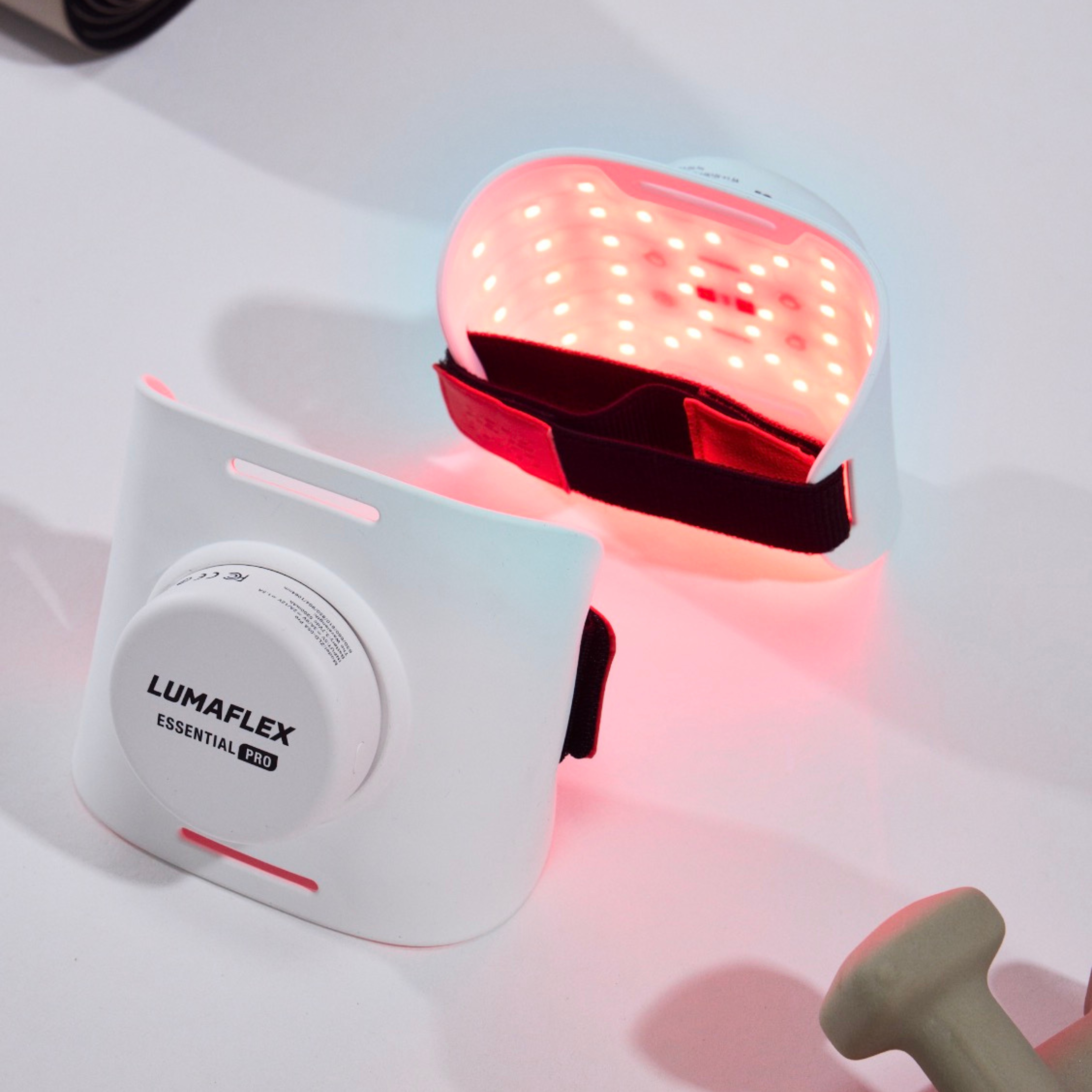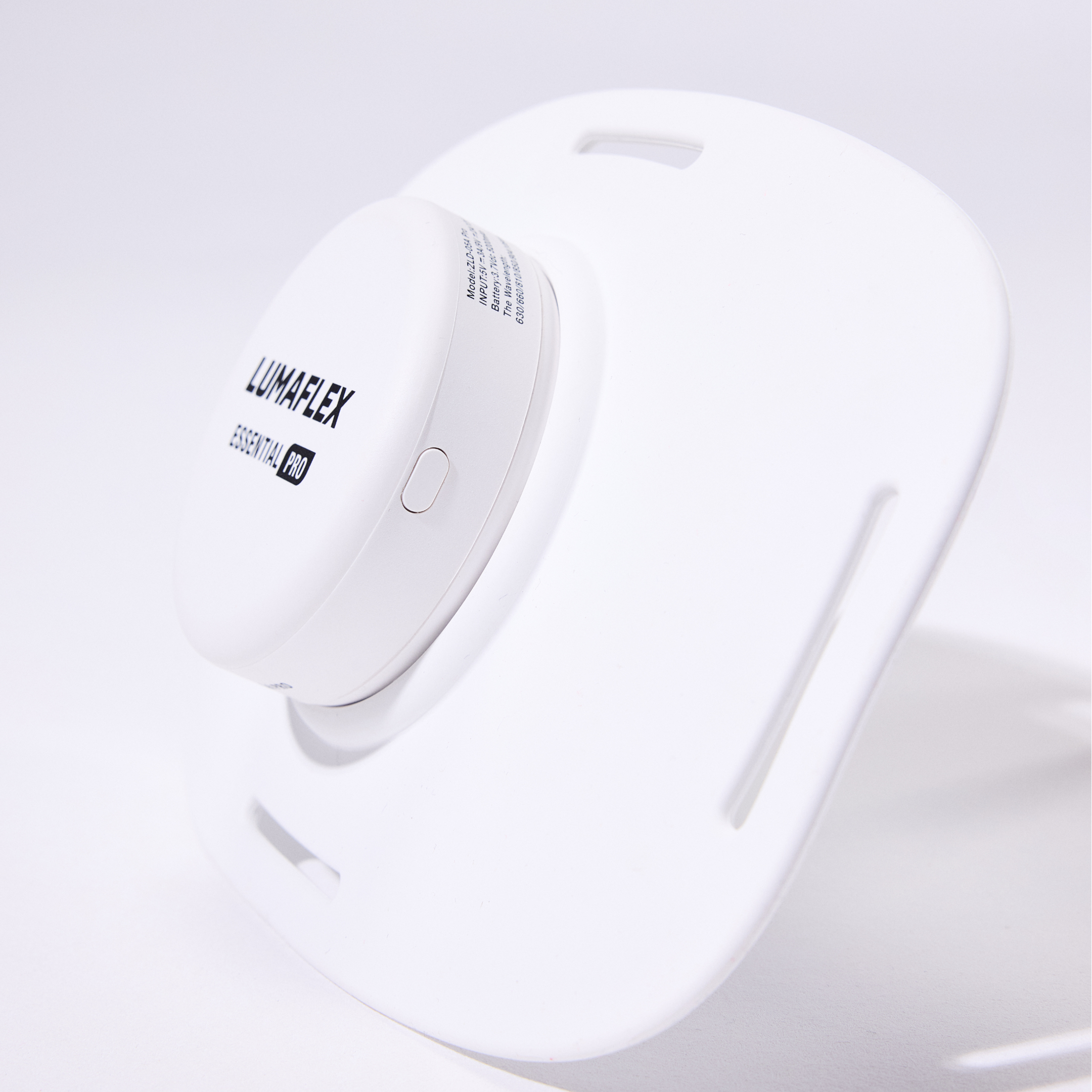Wisdom Tooth Pain Relief: Complete 2025 Guide

Wisdom Tooth Pain Relief: Complete 2025 Guide
Wisdom tooth pain relief is a common concern once these back molars begin to push through in the late teens or early twenties. Instead of arriving quietly, wisdom teeth can bring jaw stiffness, gum tenderness, or a deep throb that lingers for days. For some, it’s a dull ache that comes and goes; for others, it’s sharp enough to make eating or sleeping difficult.
This guide covers why wisdom teeth cause pain, the warning signs that mean it’s more than temporary soreness, and the most effective ways to find relief. Alongside home remedies and over-the-counter pain relievers, we’ll look at professional dental treatments and newer options like red light therapy, which reduces inflammation and supports recovery after extraction.
For a non-drug approach, Lumaflex is a handheld device you can use at home to reduce swelling and help gums heal while staying in sync with your dentist’s care plan.
Table of contents
Why Wisdom Teeth Hurt: Common Causes
Wisdom teeth often erupt later than other teeth, usually when there’s limited space in the jaw. This can create pressure, inflammation, or irritation of surrounding tissues.
Common causes of wisdom tooth pain include:
- Impaction: A tooth trapped under the gums or bone can cause sharp jaw pain, swelling, and pressure that may radiate to nearby areas.
- Partial eruption with gum irritation (pericoronitis): When a tooth only partially breaks through the gum, a flap can trap food and bacteria. This leads to swelling, tenderness, and sometimes infection. Even fully erupted teeth can irritate gums if they crowd nearby teeth.
- Crowding: Extra molars can push adjacent teeth, creating bite tension, jaw stiffness, or headaches.
- Dry socket after extraction: If a blood clot fails to protect a healing site, the exposed bone can cause intense throbbing pain that OTC medication barely eases.
Wisdom tooth discomfort usually feels deeper than a regular toothache and can spread to the jaw joint, ear, or temple. Identifying the cause early helps prevent infection, protect neighboring teeth, and guide the right treatment.

Wisdom Tooth Pain Symptoms to Watch For
Wisdom tooth pain can show up in many ways, from swollen gums and jaw stiffness to headaches that radiate into the temples or ears. Some people notice discomfort only when chewing, while others deal with pain that lingers all day. In more serious cases, infection may trigger fever or swelling in the cheek and neck. Spotting these signs early makes it easier to prevent complications.
Swollen, Tender Gums and Jaw Ache
The gums around erupting wisdom teeth often look red, feel puffy, and may be sore to touch. As the tooth pushes against surrounding tissue, the jaw can ache steadily or throb on and off throughout the day.
Pain While Chewing or Speaking
Chewing or even moving the jaw during conversation can cause sharp twinges. Biting down may feel uneven, and stiffness sometimes limits how far the mouth can open. Crowding can also create clicking or popping sounds in the jaw joint.
Pain That Radiates to the Head or Ears
Wisdom tooth pressure doesn’t always stay in the jaw. It can send pain upward, causing headaches near the temples, or outward, creating earache-like discomfort even when the ear itself is healthy.
Signs of Infection
While mild soreness may pass, some symptoms point to infection. A bad taste, pus near the gumline, or swelling that spreads to the cheek, jaw, or neck are all warning signs. If you also develop a fever or find it hard to swallow or breathe, seek dental care right away.
Recognizing these symptoms early means you can address the cause before it worsens and protect your long-term oral health.

Home Remedies for Easing Wisdom Tooth Pain Naturally
Simple at-home remedies can take the edge off wisdom tooth pain, especially when swelling or gum irritation first appears. Saltwater rinses, compresses, and natural ingredients like clove oil or aloe vera may calm symptoms for a short time. Home remedies can ease discomfort temporarily but will not address the underlying issue, which requires dental care.
Saltwater Rinse
Rinsing with saltwater helps keep the irritated area clean and reduces bacteria. Stir half a teaspoon of salt into a glass of warm water, swish for 30 seconds, and spit it out. Doing this after meals can lessen soreness and help prevent infection.
Cold and Warm Compresses
A cold pack held against the cheek for 10–15 minutes can numb sharp pain and reduce swelling. Warm compresses, such as a heated towel, loosen tight jaw muscles and improve circulation. Alternating between the two often brings the best relief.
Herbal and Natural Options
- Clove oil: Dab diluted clove oil on sore gums with a cotton ball for temporary numbing.
- Peppermint tea bags: Chilled tea bags pressed against the gums offer a cooling effect.
- Aloe vera: Pure aloe gel applied directly helps soothe inflamed tissue.
- Turmeric paste: Mixing turmeric with water creates a natural anti-inflammatory paste.
When to Seek More Than Home Care
If pain persists, or if you notice fever, pus, or swelling that spreads to the cheek or jaw, home care won’t be enough. These signs often indicate infection and need urgent treatment from a dentist.
Short-term remedies help you stay comfortable, but professional care is the only way to resolve wisdom tooth pain for good.

OTC Medicines and Dental Pain Relief Options
Over-the-counter medicines can help ease wisdom tooth pain temporarily, but they do not treat the underlying cause. Use them as short-term support until a dentist can address the problem, and always follow package directions or your dentist’s guidance.
Ibuprofen: First-Line Option
Ibuprofen is often the most effective choice, reducing both pain and inflammation in the gums and jaw.
Acetaminophen: Pain Relief Without Anti-Inflammatory Effect
Acetaminophen (paracetamol) is a safe alternative for those who cannot take ibuprofen. It blocks pain but does not reduce swelling, making it better for mild to moderate discomfort.
Aspirin: Use Cautiously
Aspirin can reduce pain and swelling but should never be applied directly to the gums, as it can burn tissue and worsen irritation.
Benzocaine Gels: Short-Term Numbing
Topical numbing gels such as Orajel or Anbesol dull sharp gum pain briefly. Apply sparingly and stop if irritation or an allergic reaction occurs.
Limits of OTC Medicines
These options can make you more comfortable, but they do not solve the root issue. Overuse may cause stomach or liver problems, and prolonged pain or spreading swelling signals that professional dental care is needed.
Dental Treatments for Lasting Wisdom Tooth Relief
When wisdom tooth pain does not settle with home care, professional dental treatments provide lasting relief. Depending on the cause, your dentist may recommend extraction, prescribe antibiotics, or monitor the teeth with x-rays and check-ups. These approaches address the problem directly instead of masking symptoms.
Wisdom Tooth Extraction
Removal is the most common treatment when wisdom teeth cause repeated pain, crowding, or infection. Some extractions are simple, while others require minor oral surgery if the tooth is impacted. Recovery usually takes 5–7 days, with swelling and soreness peaking in the first 48 hours.
Antibiotics for Infection
If an infection develops, antibiotics may be prescribed to control bacteria and reduce swelling. While this helps in the short term, antibiotics do not solve the underlying issue. Extraction or other procedures are often needed to prevent the infection from returning.
Preventative Care and Monitoring
Routine check-ups and dental x-rays allow dentists to track wisdom tooth growth before problems begin. Detecting impaction or crowding early makes treatment easier and often prevents painful complications later.
Recovery Timeline After Extraction
| Timeframe | What to Expect | Tips for Care |
|---|---|---|
| Day 1–2 | Swelling, bleeding, soreness peak | Use cold compresses and prescribed meds |
| Day 3–4 | Pain begins to ease; mild swelling and jaw stiffness may remain | Stick to soft foods; gentle mouth care |
| Day 5–7 | Most soreness fades; daily activities often resume | Light activity is fine; continue soft foods |
| Week 2 | Gums continue healing; stitches (if used) may dissolve or be removed | Maintain oral hygiene; monitor healing |
| 1 Month+ | Extraction site fully closed; tissue and bone healing continues | Regular check-up if advised by your dentist |
Professional dental care not only relieves pain but also prevents repeated infections and long-term oral health issues. If wisdom tooth pain returns often, scheduling a dental evaluation is the safest step forward.
Red Light Therapy: A Modern Solution for Wisdom Tooth Pain
Red light therapy for wisdom tooth pain helps by reducing inflammation, easing discomfort, and supporting faster tissue repair. Unlike painkillers that temporarily block pain, red light therapy works on the cellular level, improving circulation and encouraging natural healing.
Key benefits of red light therapy for wisdom teeth:
- Calms inflammation at the source: Light penetrates gum and jaw tissue, improves blood flow, and lowers swelling signals. Many patients describe the area feeling less tense within hours.
- Relieves jaw and gum pain without drugs: Rather than numbing, red light influences nerve activity to provide steadier, more natural relief.
- Supports healing after extractions: Clinical studies show patients recover more quickly, with less swelling and fewer dry socket cases, when photobiomodulation is used.
- Safe for home care: FDA-cleared devices allow daily use. Because it is non-invasive and drug-free, it works well alongside saltwater rinses, antibiotics, or pain medicine.
Red light therapy should be seen as a complement to professional dental care. It cannot replace extractions or antibiotics, but it can shorten recovery time and reduce the most painful days.
Research in Dentistry and Oral Surgery
Evidence supports photobiomodulation (PBM) as an effective tool in oral health. A 2022 study published at the Journal of Pharmacy and Bioallied Sciences found PBM reduced pain, accelerated tissue healing, and lowered inflammation after wisdom tooth removal. A 2025 report in the Journal of Oral and Maxillofacial Surgery showed patients who received PBM had nearly 40% less swelling. Dentists also use it for TMJ pain, gum disease, and nerve-related conditions.
Using Red Light Therapy at Home
Portable devices make this therapy accessible outside the clinic. The most effective models combine 660 nm red light with 850 nm near-infrared light, wavelengths shown to support gum and jaw healing.
How to use at home:
- Hold the device 1–2 inches from the sore area.
- Apply for 10–15 minutes per session.
- For stronger pain, use 2–3 times daily. For ongoing support, 3–5 sessions per week are enough.
- Pair with saltwater rinses to reduce bacteria and aid healing.

Lumaflex: At-Home Red Light Therapy for Oral Healing
Lumaflex is designed specifically for oral and jaw care, making it a reliable option for wisdom tooth pain relief and recovery after extraction. Unlike general red light devices created for skin or muscle use, Lumaflex delivers targeted wavelengths studied in dental research to ease inflammation, improve circulation, and support tissue repair.
What makes Lumaflex effective:
- Comfort-focused design: The flexible panel naturally contours to the jawline, providing consistent light coverage without awkward positioning or bulky equipment.
- Clinically backed wavelengths: Lumaflex combines red and near-infrared light within the ranges tested in oral surgery research, shown to reduce swelling and accelerate gum healing.
- Easy for daily use: Lightweight and cordless, it fits into a daily routine. A single 10–15 minute session can be done while resting, reading, or recovering at home.
- Works alongside dental treatment: Lumaflex complements saltwater rinses, antibiotics, and surgical care, offering natural support between dental visits.
For those managing wisdom tooth discomfort, Lumaflex provides a middle ground. It does not replace extractions or antibiotics when needed, but it helps shorten recovery and reduces the reliance on painkillers.
How to Prevent Wisdom Tooth Pain Before It Starts
Wisdom tooth pain cannot always be avoided, but you can take steps to reduce the likelihood of discomfort. Early dental care and consistent oral hygiene help you address issues before they escalate.
Practice Good Oral Hygiene
Brush twice a day with a soft-bristled toothbrush, paying close attention to the back of your mouth where wisdom teeth emerge. Floss daily to remove trapped food and plaque, and rinse with an antimicrobial mouthwash to limit bacteria that can irritate gums and cause inflammation.
Get Early X-Rays
Panoramic X-rays in your late teens or early twenties show whether wisdom teeth have enough room to erupt properly. Detecting impaction early allows you and your dentist to plan extractions or other interventions before pain becomes a problem.
Keep Up with Regular Dental Check-Ups
Visit your dentist at least twice a year. Routine check-ups help monitor tooth growth, catch early signs of gum irritation, and allow your dentist to recommend preventive treatments such as gum flap removal or minor adjustments.
Support Gum Health
Healthy gums reduce the chance of flare-ups during eruption. Gentle red light therapy can improve blood circulation, calm inflammation, and support faster tissue repair if extraction becomes necessary.
By combining proper oral hygiene, early detection, and consistent dental care, you can significantly reduce the risk of wisdom tooth pain and maintain overall oral health.

When Wisdom Tooth Pain Is a Dental Emergency
Most wisdom tooth discomfort is temporary, but certain signs indicate you need prompt dental care. Contact your dentist immediately if you notice any of the following:
- Severe or persistent pain: Pain that worsens or does not improve after several days may indicate an impacted tooth or infection.
- Swelling or fever: Swelling that spreads to your cheek, jaw, or neck, especially with a fever, can signal a serious infection that requires urgent treatment.
- Difficulty opening your mouth or swallowing: Limited jaw movement or trouble swallowing may mean inflammation or infection is affecting surrounding tissues.
- No relief from home remedies: If saltwater rinses, cold compresses, or over-the-counter medicine do not ease your pain, the issue is likely beyond what you can manage on your own.
Wisdom tooth pain becomes an emergency when it is severe, persistent, accompanied by swelling or fever, or interferes with opening your mouth or swallowing. Acting quickly can prevent the infection from spreading and protect your long-term oral health.
FAQs: Wisdom Tooth Pain and Red Light Therapy
Can wisdom tooth pain go away on its own?
Sometimes the discomfort eases as the tooth finishes erupting if there is enough space in your jaw. But if pain lasts more than a few days or returns often, it usually means the tooth is impacted, infected, or crowding nearby teeth, which requires dental care.
How long does wisdom tooth pain last without treatment?
Mild irritation might fade in a week or two, but ongoing or sharp pain usually continues until the underlying cause such as impaction or infection is addressed. Ignoring it can lead to swelling, spreading infection, or even cysts around the tooth.
Is red light therapy safe for oral use?
Yes. Red light and near-infrared wavelengths have been studied in dentistry for gum healing and post-extraction recovery. They do not heat the tissue or harm enamel. Devices like Lumaflex are designed to deliver these wavelengths safely at home.
How quickly does red light therapy provide relief?
Many people feel some easing of soreness after the first session, with clearer improvement after several days of consistent use. The relief builds gradually as inflammation decreases and circulation improves, rather than providing instant numbness.
Can I combine red light therapy with OTC medication?
Yes. Red light therapy does not interfere with ibuprofen, acetaminophen, or dental gels. Many people use both together, which often allows them to take smaller doses of medication while still managing pain effectively.
If red light therapy helps, do I still need extraction?
It depends on the condition of the tooth. If the wisdom tooth is healthy and has room to grow, red light therapy may control temporary flare-ups. If the tooth is impacted, severely infected, or damaging nearby teeth, extraction is usually necessary. Red light therapy can still support healing before and after surgery.
Final Thoughts: Finding Safe Relief from Wisdom Tooth Pain
Wisdom tooth pain relief is possible with the right mix of care. From saltwater rinses and over-the-counter medicine to professional dental treatments, there are proven ways to ease discomfort and speed healing. Modern options such as Lumaflex red light therapy add another layer of support by calming inflammation and encouraging natural tissue repair.
Lumaflex is portable, drug-free, and simple to use at home. Many people find it helpful during wisdom tooth flare-ups as well as after extractions, making the recovery process smoother and less stressful.
Relieve wisdom tooth pain naturally with Lumaflex at home.





